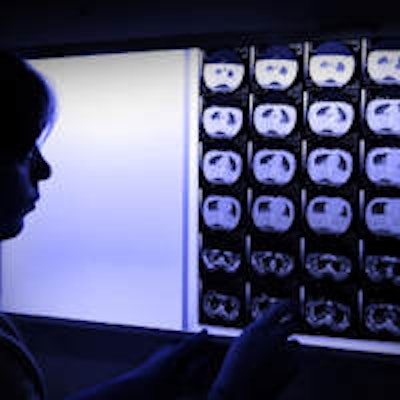
For all the beating that medical imaging has taken over the past decade, primary care physicians still value the contributions of advanced imaging technologies such as CT and MRI. In a recent survey, strong majorities agreed that imaging improves clinical decision-making and patient care.
Healthcare economics expert Christine Hughes of the Hadley Hart Group in Chicago presented the findings at the RSNA 2013 meeting. The survey was commissioned by GE Healthcare and several other imaging vendors as a way to quantify the value that medical imaging brings to patient care, as indicated by the physicians who order the exams.
"We wanted to understand the value advanced imaging modalities like CT and MRI bring to patient care by studying the perceptions of primary care physicians," Hughes said.
Imaging under fire
Imaging has been under fire for the past 10 years, largely due to rapid growth in utilization. At the same time, there haven't been many studies validating imaging's benefits, she told session attendees.
"The annual spending rate for advanced imaging procedures like CT and MRI grew between 12% and 15% from 2000 to 2005," Hughes said. "There's been a scarcity of published evidence that imaging improves outcomes, and in the consumer press, this old data has been used to project excessive imaging growth rates."
 Christine Hughes of the Hadley Hart Group.
Christine Hughes of the Hadley Hart Group.
Hughes and colleagues worked with Harris Interactive, an independent polling firm, to conduct 42 qualitative interviews with primary care providers (PCPs) in April and May 2011. This was supplemented with an online, self-administered, quantitative survey of 500 primary care providers in July and August 2012. Final results were weighted to represent the American Medical Association membership based on gender, years in practice, region, and specialty.
The research was supported by the Advocacy Research Working Group and PET Working Group of the Medical Imaging and Technology Alliance (MITA), as well as GE, Siemens Healthcare, and Toshiba America Medical Systems.
Primary care docs believe in imaging
What did the surveys find? Primary care physicians believe that imaging provides value, according to Hughes.
"Primary care physicians said that they rely heavily on diagnostic imaging for diagnosis, that using advanced imaging results in earlier and better interventions -- and helps reassure them and their patients," Hughes said.
In the Web-based survey, 90% of respondents agreed that advanced imaging allows them to be more confident in their diagnoses, and it provides unique data that are otherwise unavailable. In addition, 89% believe that advanced imaging allows them to make better clinical decisions and increases their confidence in treatment choices.
Other results include the following:
- 88% believe advanced imaging shortens the time to definitive diagnosis.
- 85% believe the quality of care patients receive is improved by advanced imaging.
- 81% believe that advanced imaging shortens the time to establishing an appropriate treatment protocol.
- 80% believe that advanced imaging allows patients to feel they are receiving the best care.
There were differences among age groups, Hughes noted. More-experienced physicians who were likely to have practiced without easy access to advanced imaging placed a higher value on it, she said. Younger physicians were more likely than older physicians to view advanced imaging as a tool for practice efficiency.
The data show that restricting access to advanced imaging could handicap the diagnostic abilities of primary care providers and negatively affect patient outcomes, Hughes concluded.
"Primary care physicians rely on advanced imaging and see it as a critical tool in their practice arsenal," she said. "And the partnership between PCPs and radiologists can only be bolstered as referring physicians gain a deeper understanding of the benefits of advanced imaging."




















